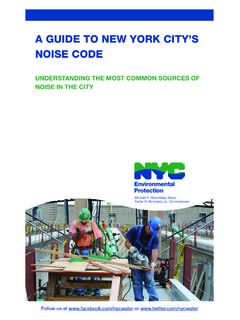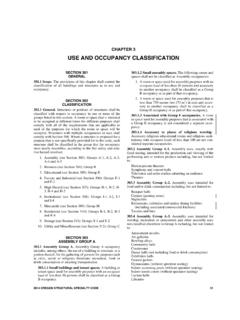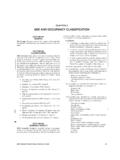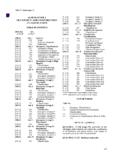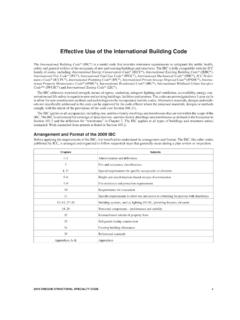Transcription of 3-5-6 Most Final - Architecture and Expediting
1 Copyright 2007 by NYC Department of Buildings1 BUILDING CODEOF THE CITY OF NEW YORKNew York City Department of Buildings20 September 2007 Fatma Amer, PE James Colgate, RA John Lee, RA Keith Wen, RA Copyright 2007 by NYC Department of Buildings2 The New York Society of Architects is a Registered Provider with the American Institute of Architects Continuing Education Systems. Credit earned on completion of this program will be reported to CES Records for AIA members. Certificates of Completion for non-AIA members are available on program is registered with the AIA/CES for continuing professional education. As such, it does not include content that may be deemed or construed to be an approval or endorsement by the AIA of any material of construction or any method or manner of handling, using, distributing, or dealing in any material or product.
2 Questions related to specific materials, methods, and services will be addressed at the conclusion of the 2007 by NYC Department of Buildings3 Learning ObjectivesThis forum will discuss in general the differences between the current New York City Building Code and the proposed amended International Building Code in the following areas: Participants will be able to classify buildings as separated, incidental, or mixed occupancy. Participants will be able to identify occupancy classification for construction projects, including complex multi-use facilities. Participants will be able compare the current New York City Building Code occupancy classifications into the new designations under the new New York City Construction Code.
3 Participants will identify the differences between the occupancy classifications in the current New York City Building Code occupancy classifications into the new designations under the new New York City Construction Code. Participants will be able to calculate maximum building heights based on the occupancy classification and construction group. Participants will be able to apply the frontage increase factors to the maximum building area Table 503. Participants will be able to apply the sprinkler increase factors to the maximum building height and area Table 503. Participants will be able to classify buildings into the respective construction groups.
4 Participants will be able to identify the combustible materials permitted in noncombustible construction groups. Participants will the able to calculate the minimum separation distances for buildings depending on the occupancy classification and construction 2007 by NYC Department of Buildings4 Chapter 3 Use and Occupancy ClassificationsCopyright 2007 by NYC Department of Buildings5D-1semiconductor fabricationfacilities using hazardous production materials (HPM) in excess of the permitted aggregate that are health that readily support combustionor present present a deflagrationhazard or a hazard from accelerated that present a detonationhazard.
5 H-1 AHigh Hazard: Groups H-1, H-2, H-3, H-4, and H-5HD-2involve non-combustible, non-flammable materials, or low-hazardous production. and industrial:Groups F-1 and F-2 FGEducational: 5 or more persons at any time for educationalpurposes. EEBusiness:office, professional, service-typetransaction, public or civic in or viewing outdoor sporting events withspectator , F-1b, F-4worship, recreationor amusement(physically active), and other assembly uses not classified elsewherein Group and/or fixed seating, intended for production and viewing of theperformance artsor motion : Groups A-1, A-2, A-3, A-4, and A-5A Occupancy Classifications1968 Code classificationCopyright 2007 by NYC Department of Buildings6 Occupancy ClassificationsKUtility and Miscellaneous.
6 Structures of an accessory character, or not classified in any specific occupancy for occupancy for any flammableor : Groups S-1, and S-2 SJ-3not more than 2 apartmentson a long term basis(for a month or more).R-3J-2more than 2 dwelling unitson a long term basis(for a month or more).R-2J-1occupied transiently(for less than one month) and student dormitories. R-1 JResidential: Groups R-1, R-2, and R-3 RCMercantile: displayand saleof day carefacilities, occupied by persons of any agewho receive custodial care(without overnight) by individuals other than parents, guardians, or relatives in a place other than at the than 5 persons who are detainedunder restraintor , surgical, nursing orcustodial care, on a24-hour basis,of more than 3 persons, who are not capable of self-preservationor responding to an emergency situation without physical assistance from staff.
7 I-2J-2 housing persons, on a 24-hour basis, capable of self-preservationand responding to an emergency situation without physical assistance from , J-2 Institutional: Groups I-1, I-2, I-3, and I-4I1968 Code classificationCopyright 2007 by NYC Department of Buildings7 Occupancy Classifications Assembly spaces occupied by fewer than 75 persons are classifiedas Group B (Business), not as an assembly occupancy. Educational uses for adults beyond the 12th grade, including universities, are classified as Group B (Business), not as an educational occupancy Non-production chemical laboratories are classified as Group B (Business), not as a factory/industrial occupancy Student Dormitories are classified as Group R-1 transient occupancy, as opposed to a J-2 non-transient occupancy.
8 New concept of Student Apartments (Group R-2) introducedCopyright 2007 by NYC Department of Buildings8 Occupancy ClassificationsStudent Apartments (Group R-2) An apartment occupied or arranged to be occupied by students enrolled at a single accredited college or university and maintaining a common household pursuant to a lease, sublease, or occupancy agreement directly with such college or university. Up to 7 students permitted within a single dwelling unit The building must be fully sprinklered The maximum number of occupants in a given space within a dwelling unit as outlined in the Housing Maintenance Codecannot be exceededCopyright 2007 by NYC Department of Buildings9 Occupancy Classifications Photocopying and printing shops using only electronic printing equipment are classified as Group B (Business).
9 Libraries are classified as Group B (Business) Libraries are classified as Group E (Educational) when accessory to a Group E occupancy Motor fuel dispensing facilities ( gas stations) are classified as Group M (Mercantile) Custodial care facilities ( daycare) are classified in Group A, B, E, I, or R, depending upon the occupant mix and facility arrangement Occupant mix also dependent upon the occupants capability for self-preservationCopyright 2007 by NYC Department of Buildings10 Occupancy ClassificationsCustodial Care FacilitiesBC 75 occupants including kids, no babies BBC than 75 occupants including kids*, no babies**A-3BC , 5 babies and kids, in dwelling unit occupied only during the day, DoH registeredR-2 or R-3BC , 6 kids (up to age 13)
10 , no babies, in dwelling unit, occupied only during the day, DoH registeredR-2 or R-3BC number of kids, any number of babies, occupied only during the dayI-4 custodial care facilityBC number of kids, more than 2 babies or more than 3 kids incapable of self-preservation, occupied overnight or more than 24 number of kids, maximum 2 babies, occupied for more than 24 Exception 35 or more kids, with maximum 30 babies, and all babies on level of exit discharge. (If even 1 baby is on 2ndfloor, then must be I-4)EBC or more kids, with maximum 2 babiesEBuilding Code sectionCriteriaOccupancy Group* Kid = older than 2 yrs, but younger than 18 yrs.** Baby = younger than 2 : the terms kid and baby are not technical in nature and are being used here for illustrative purposes onlyCopyright 2007 by NYC Department of Buildings11 Chapter 5 Height and Area LimitationsCopyright 2007 by NYC Department of Buildings12 Chapter 5: Height and Area General: The height and area for buildings of different construction types shall be governed by the intended use of the building and shall not exceed the limits in Table 503 except as modified Height and area-Chapter 5 Construction Types-Chapter 6 Use and Occupancy-Chapter 3 and 5 Copyright 2007 by NYC Department of Buildings13 Table 503 Chapter 5.




